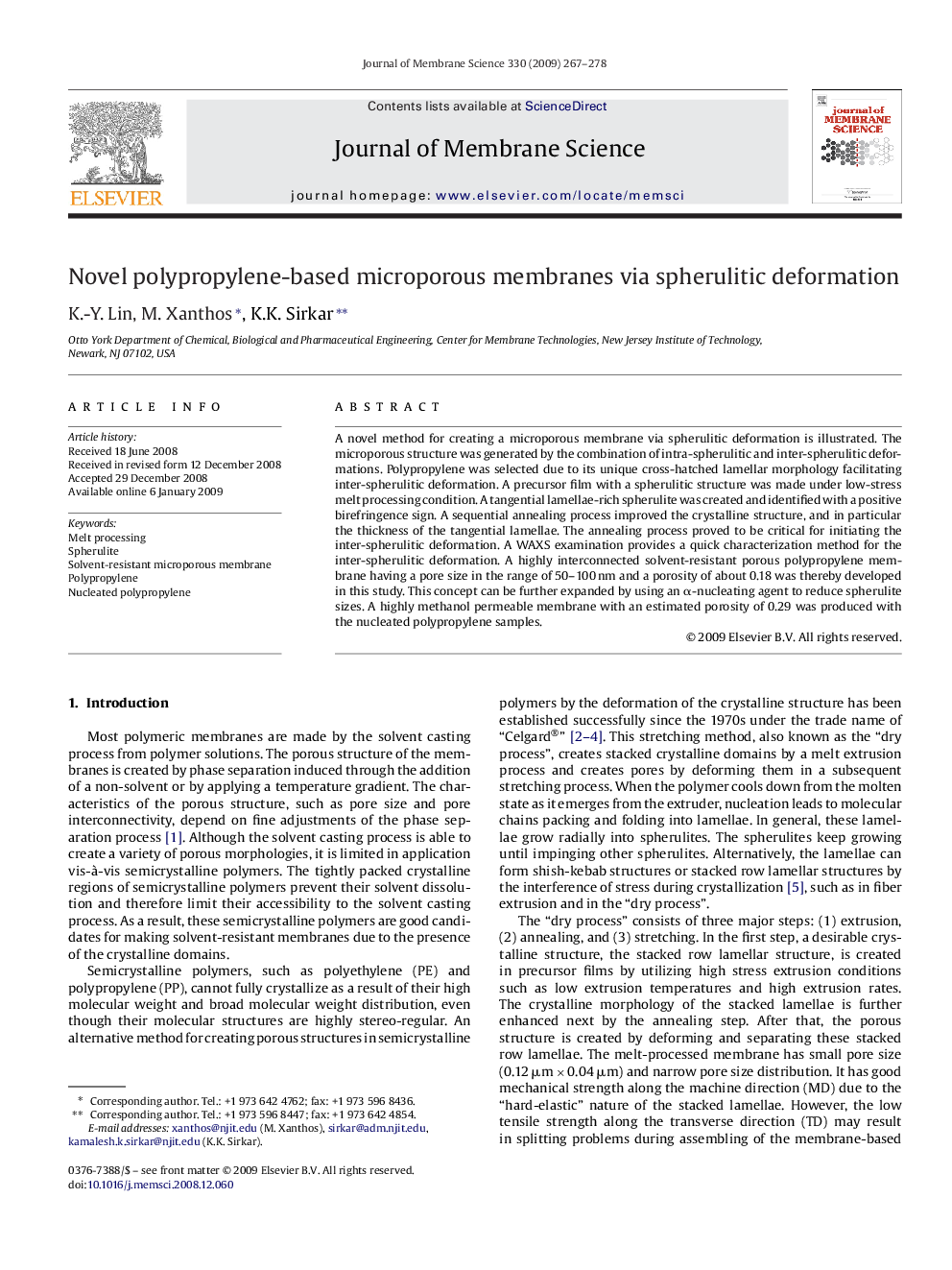| Article ID | Journal | Published Year | Pages | File Type |
|---|---|---|---|---|
| 637189 | Journal of Membrane Science | 2009 | 12 Pages |
Abstract
A novel method for creating a microporous membrane via spherulitic deformation is illustrated. The microporous structure was generated by the combination of intra-spherulitic and inter-spherulitic deformations. Polypropylene was selected due to its unique cross-hatched lamellar morphology facilitating inter-spherulitic deformation. A precursor film with a spherulitic structure was made under low-stress melt processing condition. A tangential lamellae-rich spherulite was created and identified with a positive birefringence sign. A sequential annealing process improved the crystalline structure, and in particular the thickness of the tangential lamellae. The annealing process proved to be critical for initiating the inter-spherulitic deformation. A WAXS examination provides a quick characterization method for the inter-spherulitic deformation. A highly interconnected solvent-resistant porous polypropylene membrane having a pore size in the range of 50-100 nm and a porosity of about 0.18 was thereby developed in this study. This concept can be further expanded by using an α-nucleating agent to reduce spherulite sizes. A highly methanol permeable membrane with an estimated porosity of 0.29 was produced with the nucleated polypropylene samples.
Related Topics
Physical Sciences and Engineering
Chemical Engineering
Filtration and Separation
Authors
K.-Y. Lin, M. Xanthos, K.K. Sirkar,
